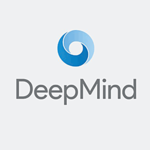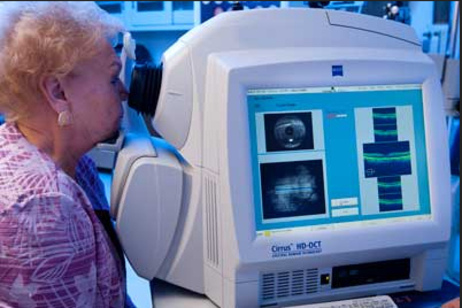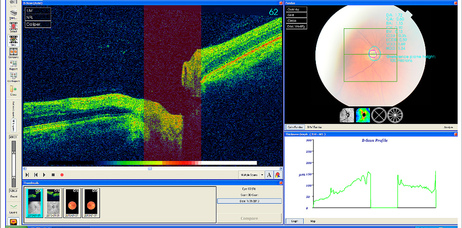Breakthrough AI Technology as Good as Experts
Published Sep-10-18Breakthrough:
A machine-learning system that can detect more than 50 different eye diseases could speed up diagnosis and treatment that may prevent some people from going blind.
Company:
Moorfields Eye Hospital/DeepMind, United Kingdom
The Story:
 A 2018 study by Moorfields Eye Hospital in London (the oldest eye hospital in the world) and the Google company DeepMind discovered that artificial intelligence can diagnose some eye diseases as well as some of the world's leading experts.
A 2018 study by Moorfields Eye Hospital in London (the oldest eye hospital in the world) and the Google company DeepMind discovered that artificial intelligence can diagnose some eye diseases as well as some of the world's leading experts.The research which was published in the journal Nature Medicine was initiated by Dr. Pearse Keane, a consultant ophthalmologist at Moorfields. The hospital was struggling to treat people in a timely fashion and he thought that applying artificial intelligence to the problem would speed up matters, particularly for urgent cases.
Studying Retinal Scans
A team at DeepMind created an algorithm that could analyze high-resolution 3D scans of the back of the eye. It consisted of two neural networks, complex mathematical systems which can mimic the way the brain operates.
Thousands of scans were used to train the algorithm and then it was pitted against leading ophthalmologists and optometrists. Both the algorithm and the eye experts were presented with the scans of 1,000 patients whose outcomes were already known and asked to give a diagnosis.
Accuracy
They were also asked to make a referral: either urgent, semi-urgent, routine or observation only. The algorithm made the correct referral decision for over 50 eye diseases with 94% accuracy. It did not miss a single urgent case.
"When I actually saw the result and saw the algorithm was as good as some of the world's leading experts at diagnosing these conditions, it certainly was a jaw-dropping result for me,"| said Dr. Keane in a BBC radio interview.
The research also answers one of the biggest criticisms that has been leveled at some types of AI programs, namely that they are a black box. They can tell you something but they can’t explain it. However, the Moorfields/DeepMind algorithm is capable of not only making a diagnosis but also of explaining why it came to the conclusion it did. It does this by highlighting the features on the scan that it used to come to a particular conclusion.
Clinical Use
Dr. Keane reckons that it could be two or three years before AI is used to diagnose patient scans in hospitals. Before this can happen a major real-time trial needs to be done to confirm the findings.
The benefit of this AI system if used in hospitals is that it will be able to spot those patients with sight-threatening diseases at the earliest possible opportunity and get them in front of specialists and treated. Eye doctors say that earlier detection means earlier treatment which can save the sight of patients.
Next Story »


